Technological Overview of Integrating Decentralized Information Technologies in IoT Applications
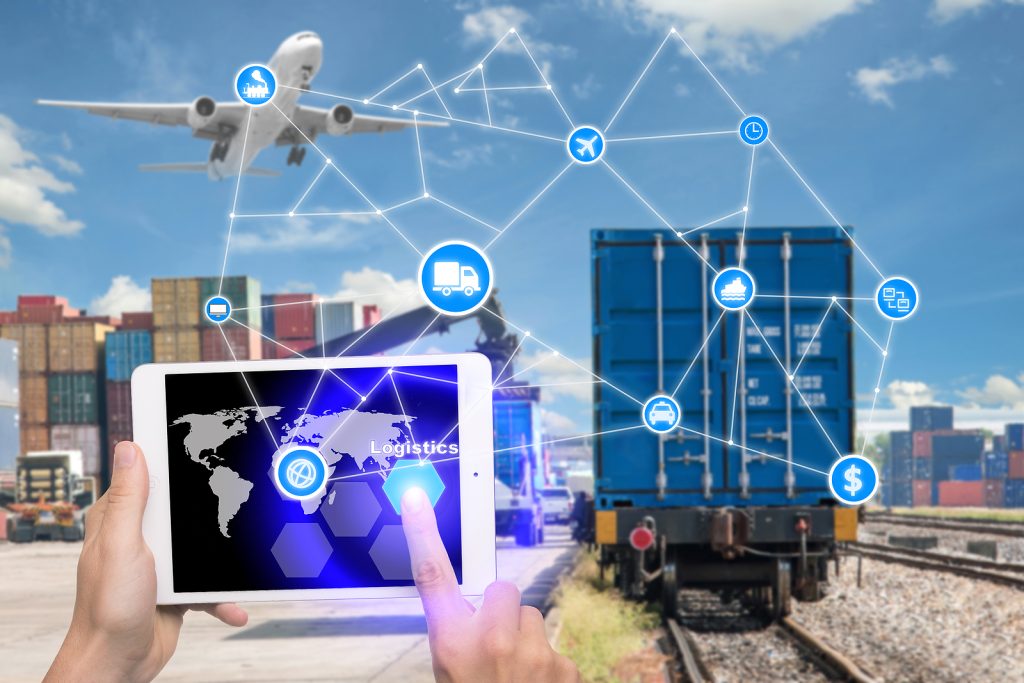
What Are IoT & Blockchain?
A technology enabling IoT components distributed across the internet to transmit data to a private (or sometimes customized public) blockchain network, facilitating the sharing of transactions (logical processing units with business significance) in a tamper-resistant manner.
The Internet of Things (IoT) has become a central technology in numerous applications, such as smart healthcare, transportation management, autonomous vehicles, smart power grids, advanced payment systems, smart cities, and more.
IoT, or Internet of Things, refers to control and management systems utilizing physical sensors deployed in the field, communicating with a control center via the Internet. Most current IoT systems are based on a centralized architecture, where a single central system interacts with all sensors and provides insights to the system manager. IoT technology is commonly considered a key component of the Fourth Industrial Revolution (IR4). A review addressing IoT Security was previously published. In recent years, numerous projects and articles have explored the contribution of combining Blockchain technology with IoT, creating significant economic value for companies.
In the field of blockchain, there is still no uniform taxonomy for the architectures and technologies implementing the network. However, there are substantial differences between the technologies required for implementing various blockchain architectures and applications with distinct characteristics and constraints. The primary distinction in the blockchain domain is between private networks (also known as Permissioned), which primarily serve enterprise applications, and public networks (also known as Permissionless), which underpin domains such as cryptocurrencies (Bitcoin, Ethereum, etc.).
The ability to integrate blockchain technologies into applications depends on the state of blockchain infrastructure development. Significant technological gaps still exist before achieving widespread use of this technology.
According to an analysis by Gartner, systems integrating blockchain are expected to generate over $3 trillion in additional value for companies implementing projects that combine this technology with others, such as AI and IoT.
In IoT, there is a need to establish and manage communication between service providers, networks, and the users of these network services.
One example is using an electronic wallet: communication must occur between users, their payments (recorded on the blockchain), and the credit service providers. Another example involves sensor arrays that provide services to various systems and entities, such as infrastructure camera arrays offering services to municipalities, police, transportation management, maintenance, and more. The decentralized nature of IoT systems highlights the high potential for integrating technologies across a wide range of applications.
Purpose of the Review
- Present the requirements of decentralized IoT systems in relation to the current and expected future capabilities offered by blockchain technologies and other information decentralization and processing technologies.
- Review decentralized information technologies, focusing on their existing limitations and planned advancements in the field.
- Provide tools to critically evaluate technological statements related to the decentralization and processing of information.
- Develop a better understanding and the ability to ask informed questions about the meaning of blockchain and other data decentralization technologies, along with a brief overview of existing decentralization and parallel processing technologies.
The review presents data, forecasts, and opinions. It focuses on a topic that is still evolving, encompassing innovations, changes, and “shifting trends.” This subject is part of the new wave surrounding the Web3 revolution (the third generation of the internet), which emphasizes the decentralization of applications and the use of advanced technologies such as IoT, AI, Blockchain, and Big Data. The review provides a brief overview of these topics, along with references to articles and information sources.
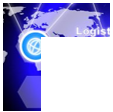
Blockchain Technology
Blockchain technology, part of the Distributed Ledger Technology (DLT) family, enables the creation of a distributed, consistent, and time-sorted database without a central authority controlling its contents. At the core of the technology is the recording of entries in a block, which, after being recorded and approved by the mechanism embedded in the technology, cannot be cancelled (though they can be corrected using reverse entries), much like journal entries in accounting. This principle gives the technology its name – Blockchain, or a chain of blocks.
Blockchain uses the internet as its communication infrastructure between the various components of its operations.
The blocks are linked such that each new block contains the hash value (SHA-256) of the previous block’s data and an additional random number (nonce). This random number ensures the hash result is lower than a predefined target value.
This proof-of-work mechanism ensures two principles: first, that the process of creating a block is “difficult”, meaning it requires numerous attempts on average to find a random number that results in a hash below the target value; second, that retroactively altering the block history would require the modifying entity to perform an amount of work that is practically impossible.
Each node holds a copy of the blockchain, and whenever a node announces the discovery of a new block, it must provide the new block along with the random number found. All other nodes verify that the hash result of the new block, combined with the random number, is valid for the previous block’s hash value and that it is indeed smaller than the predetermined target value. This process adds the new block as the following link in the blockchain and initiates a new effort to create an additional block above it. Different blockchain implementations vary in the number and types of users, the data structure, and the algorithms used. The blockchain database consists of blocks containing a collection of transactions organized in a Merkle tree structure.
Blockchain technology became popular primarily due to cryptocurrencies. The Bitcoin network utilized these records to introduce the first decentralized cryptocurrency (2009). Subsequently, additional blockchain networks were established, some with unique features, such as Ethereum, which supports “smart contracts”, or Zcash (z.cash), which provides transaction privacy.
Blockchain has five key characteristics:
Distribution: Blockchain participants are physically located in different places and are connected via a network. The nodes are the machines network participants use to run the consensus algorithms (described below) to perform operations on the blockchain. Not every user has a full node, but they can view the ledger of operations without the ability to alter it.
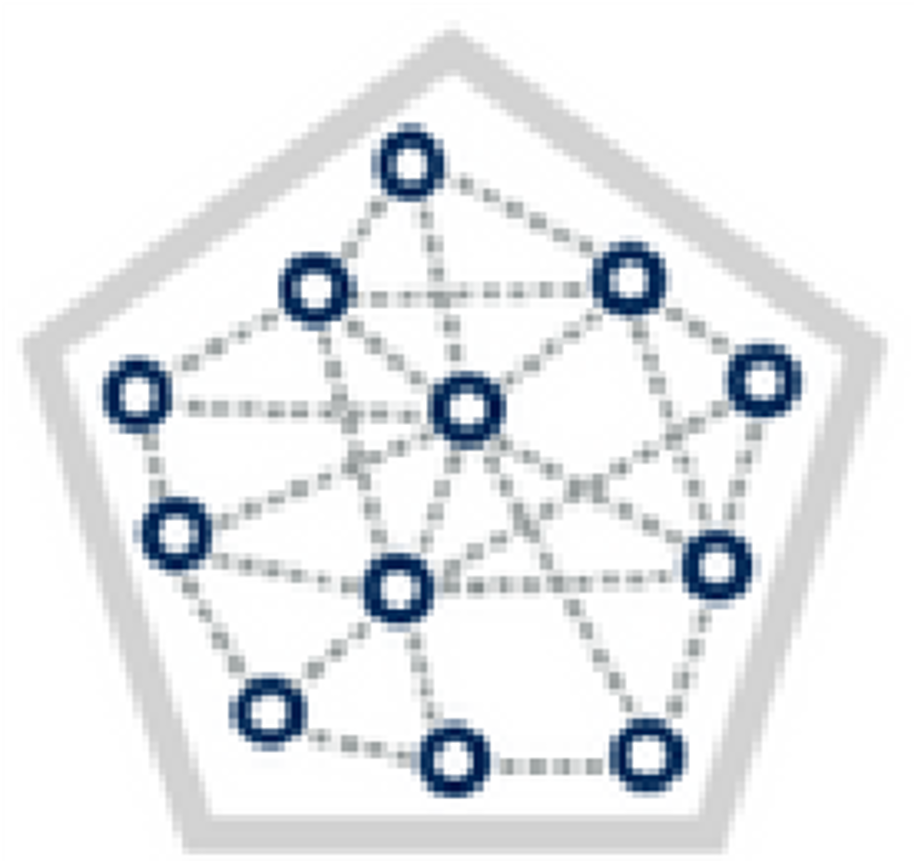
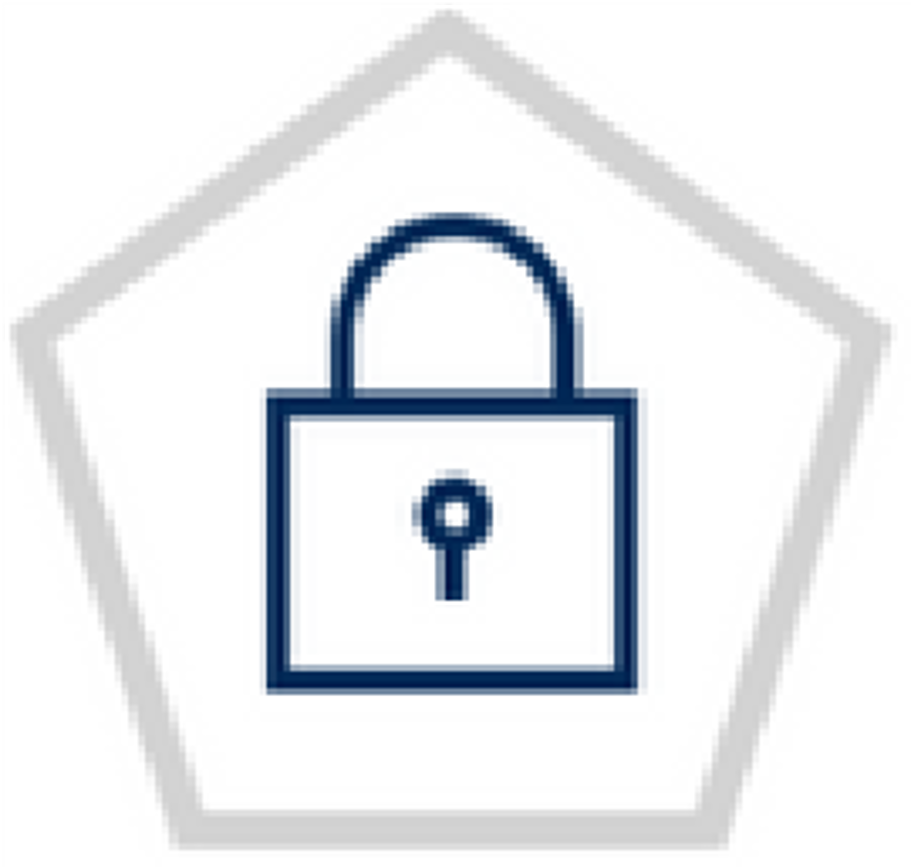
Encryption: Blockchain employs public and private keys to securely and semi-anonymously record data in blocks (pseudonyms identify participants). Participants can control their identity and share only what is necessary for a transaction.
Immutability: Completed transactions are cryptographically signed, timestamped, and added sequentially to the ledger. Records cannot be tampered with or altered unless participants agree to do so.
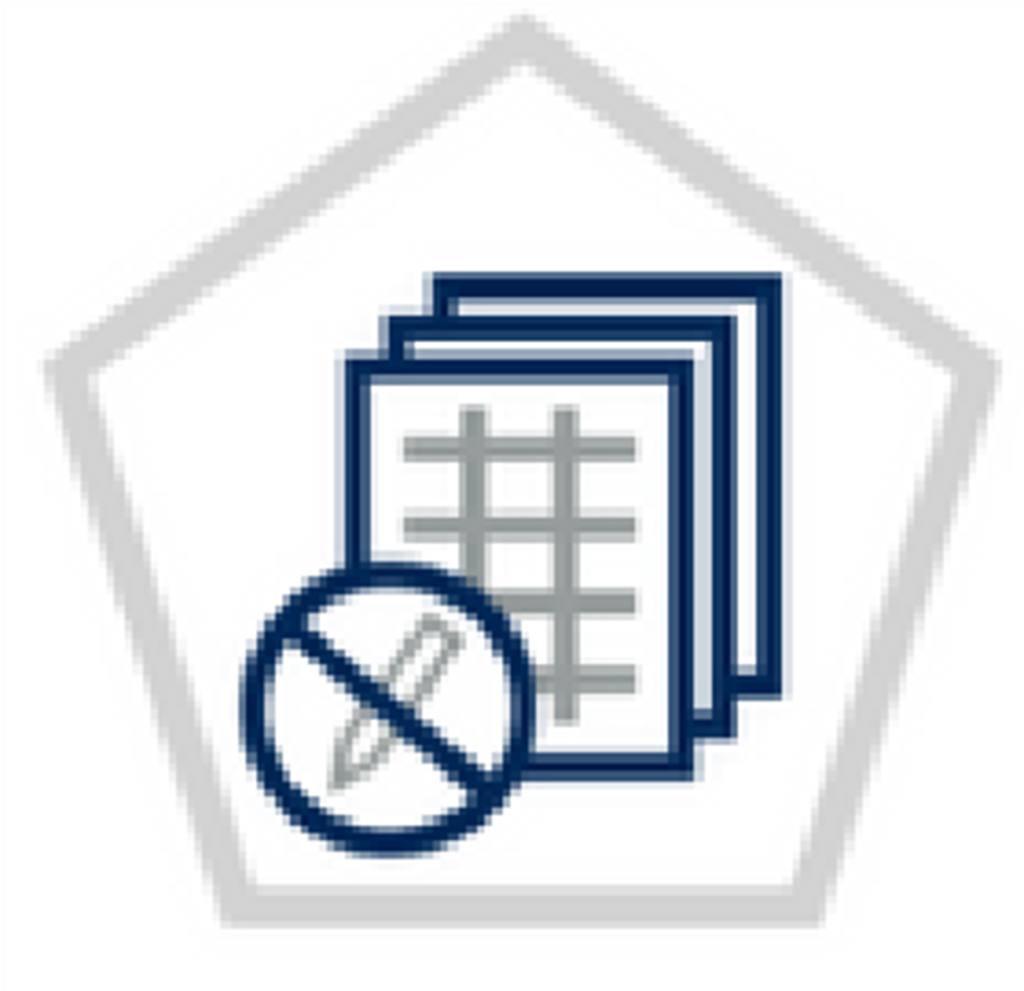
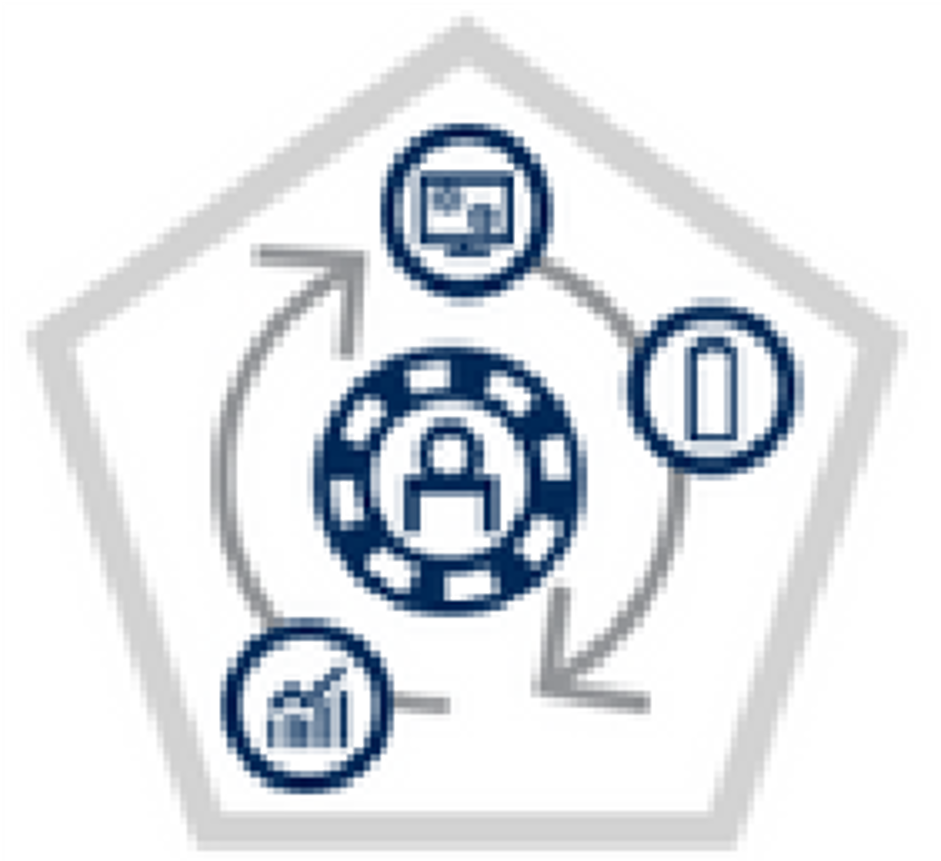
Tokenization: Transactions and other interactions on the blockchain involve secure exchanges of value. Tokens serve as digital representations of physical assets, as a reward mechanism for network participants, or to create and exchange forms of value. They also enable participants to control their data, one of the key business drivers of blockchain.
Decentralization: Blockchain information and operating rules are distributed across the network. No single entity controls the computers or nodes and dictates the rules. Each node maintains an identical, encrypted copy of the network’s ledger. A consensus mechanism, executed on nodes, validates and approves transactions. Consensus mechanisms are algorithmic rules defining data exchange between network nodes. Majority agreement enables factual consensus on the ledger’s record. This decentralized structure, driven by consensus, eliminates the need for a central authority and acts as a safeguard against fraud.
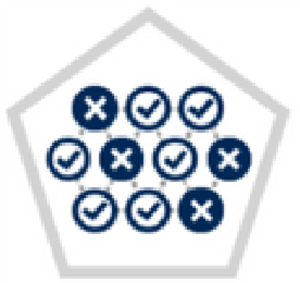
Blockchain technology offers solutions for various fields, extending beyond the monetary-financial context of creating cryptocurrencies and cryptographic tokens. Its applications can improve traditional technological systems by managing large amounts of trust-dependent information, optimizing accessibility and use of databases, creating standardization, enhancing coordination capabilities, reducing workflows, lowering costs, and improving operational efficiency. It can also increase transparency and data accessibility for multiple participants, improve accountability, enhance data security, and reduce exposure to risks such as fraud, embezzlement, and scams.
These applications are essential for expanding blockchain technology’s use to other domains, such as medical records, government database management, digital identification, smart cities and intelligent transportation, online voting, and more.
One of the differences between various blockchain networks lies in the process of collecting and enacting (establishing consensus for) the records in a block: how records are gathered from those authorized to write them, how they are selected, and finally, how they are bound into a block.
Another distinction lies in the division between blockchain networks managed by a central authority and those operating without a central authority. In decentralized networks, records are “broadcasted” to the network, replicating them among several participants. These participants are responsible for finalizing which records are included in a block.

Security Vulnerabilities in Blockchain Systems
Blockchain security systems are designed to address the lack of trust in those who write to the chain, as well as those who hold and manage it—in essence, all parties involved in recording and managing the chain.
There are known vulnerabilities inherent in the decentralized architecture of blockchain, which can be exploited in various ways. For example, in a “51% Attack“, an attacker who gains control of more than 50% of the computational power in a given network (which assumes no participant holds such a large share) can “rewrite” the blockchain’s history. This event occurred in 2018 and 2021. Other examples of attacks include Sybil Attacks, where networks (mainly public ones) are flooded with fake users and collapse; Timejacking Attacks, an extension of Sybil Attacks, where the network is disrupted by flooding it with nodes reporting inaccurate timestamps; and phishing attacks, in which scammers obtain user credentials and information by sending fake messages to wallet owners.
Modern cryptography provides mechanisms that can offer capabilities similar to blockchain, with differences rooted in trust requirements and safety assumptions. For example, digital signatures outside of blockchain rely on a trusted central authority that matches a user’s public key with their identity. In blockchain, such an entity is unnecessary.
In the realm of information security, there is criticism regarding the strength of cryptographic components and their implementation, which can leave vulnerabilities in the system. Alternative security systems often demonstrate better performance but rely on different trust assumptions. For instance, timestamping servers can be implemented more efficiently than blockchain. However, the assumption is that the server(s) are reliable and do not forge timestamps. Therefore, when designing a timestamping system, ensuring a sufficient number of reliable servers and that the trust model aligns with reality and security requirements is essential.

Review of Leading Data Decentralization Technologies
When “blockchain” is sometimes mentioned, it refers to Distributed Ledger Technology (DLT). Blockchain is an application of DLT with a specific set of features. DLT is a shared and synchronized database that multiple sites, institutions, or geographical regions agree upon. It allows participants in the system to verify each node in the network, access shared records across the network, and maintain an identical copy of it. Any changes or additions to the ledger are reflected and replicated to participants within seconds or minutes. Decentralization provides greater resilience to ledgers compared to centralized systems against cyberattacks and fraud — there is no single point of failure.
Notable Data Decentralization Technologies
In recent years, significant developments and evolutions have been made in the architectures for distributed data storage and processing enabled by cloud technologies. Below is an overview of several platforms:
Kafka: An open-source distributed platform. Kafka is designed as a consistent, distributed, and replicated log for running event-driven microservices or applications that process large data streams.
Pulsar is an open-source, asynchronous distributed messaging system that offers scalability and high operational speed (less than 100 milliseconds). The system separates message creation and distribution from processing.
BookKeeper: An open-source solution that provides reliable and consistent storage of messages in “ledgers” on the system’s servers called Bookies. Each Bookie synchronously writes every message to a local journal for recovery purposes and then asynchronously to a local ledger for storage.
RabbitMQ: An open-source messaging system that enables low-latency queuing, routing mechanisms, and message exchange between servers. Managed RabbitMQ-like services are available from all major cloud providers.

Challenges and Concerns in Blockchain-Based Applications
The concept and underlying technologies of blockchain appear promising, but practical implementation reveals significant difficulties:
1. Technical Complexity
Blockchain technology is still immature, and efforts to implement blockchain projects are substantial. These efforts often underestimate the required workload and the complexity of the projects.
2. Organizational Complexity
Deploying blockchain across multiple organizations demands extensive efforts, including addressing system compatibility issues and legal and regulatory considerations in the regions where the system operates.
3. Security
The deployment of a distributed, tamper-proof network that resists unauthorized modifications is critical for successful implementation. Implementing such a system across different organizations, whether private or public, is challenging. Security is far more than just a feature or an API.
4. Transaction Speed (TPS)
Bitcoin is slow, and most other blockchain infrastructures are not designed to handle millions of messages. Significant efforts are being made to improve blockchain network performance to support hundreds to thousands of messages per second. However, the TPS levels achieved in recent developments (as of 2022) still fall short of the transaction speed and volume required for applications in e-commerce, supply chains, the Internet of Things (IoT), and many other use cases.
5. Energy Consumption
Some cryptocurrencies use “Proof of Work” as their consensus mechanism. The resources consumed for Bitcoin mining are immense, accounting for approximately 2% of global energy consumption. This concern is mainly relevant to public blockchains, whereas private blockchains employ alternative methods.
6. Data Tenancy
In blockchain networks spanning countries and organizations, defining privacy, ownership, compliance, access rights, and data usage can be complex.
7. Lifecycle Costs
Blockchain infrastructures are complex and involve maintaining a distributed system across companies. Developing, operating, and managing blockchain-based systems is fundamentally different and more challenging than managing monolithic or microservices-based applications in cloud computing.
Due to these challenges, it is crucial to select blockchain technology only when it is appropriate. Most blockchain projects in recent years have focused on evaluating the technology and conducting technical feasibility assessments. An example of unnecessary blockchain usage can be seen with the Hadoop project 5–10 years ago. Hadoop defined a framework for distributed applications processing large data volumes. While the technical feasibility of Hadoop was proven, it did not provide significant business value to justify the additional complexity and cost, leading the industry to adopt newer technologies such as Spark and Storm for stream processing. A similar future may await blockchain technology.

IoT & Blockchain: Market Trends and Potential
It remains unclear if and when the IoT & Blockchain sector will be recognized as a technological revolution. According to Gartner, the sector is expected to gain momentum starting in 2025 during the “fourth wave,” once large entities, such as governments, adopt blockchain technology. This prediction also stems from challenges in standardization: currently, anyone can create a network, and it is unclear what adjustments are needed to enable IoT applications to connect seamlessly to blockchain-based systems.
According to Precedence Research, the sector’s growth is driven by the increasing pace of IoT technology adoption, alongside the need to improve operational efficiency and enhance the security of IoT-based systems. Additional factors influencing market growth include the demand for streamlining business processes, improving transparency through blockchain, increasing the use of blockchain-based smart contracts as a non-human, independent, and consistent factor for making business decisions (such as payment conditions), and integrating blockchain into the healthcare sector, among others.
A report by the OECD highlights that approximately 30 governments and 90 central banks worldwide are exploring blockchain technology, positioning them as potential major customers of technology providers in the field. Precedence Research also estimates that the global IoT & Blockchain market will achieve an annual growth rate of 73.5% between 2021 and 2030, growing from $134 million in 2021 to $197.5 billion by 2030.
According to Markets and Markets, the total sales potential for blockchain technologies outside the cryptocurrency sector between 2022 and 2027 could reach $67 billion. Gartner predicts that by 2024, around 25% of companies will utilize decentralized applications based on Web3 technologies (with blockchain as their foundation). This forecast also takes into account the crypto market collapses of 2022.
According to Gartner, IoT & Blockchain Integration is predicted to occur within the next 5–10 years, placing it at the forefront of technologies expected to drive significant transformation during this period. As mentioned, technological advancements are required for the widespread implementation of blockchain technology. Potential solutions will be discussed later in the review.

Requirements for Implementing Decentralized IoT Systems
IoT applications must address the following needs:
![]() High performance: IoT networks must handle high request rates, large volumes of data, and provide fast responses.
High performance: IoT networks must handle high request rates, large volumes of data, and provide fast responses.
![]() Data reliability: Information impacts processes where reliability is critical, such as in healthcare and financial systems.
Data reliability: Information impacts processes where reliability is critical, such as in healthcare and financial systems.
 Low latency: Timely data reception and response are essential, aligned with the system’s constraints.
Low latency: Timely data reception and response are essential, aligned with the system’s constraints.
![]() Security of data transmitted over the network: Often, the data involves sensitive personal, security, or business-related information.
Security of data transmitted over the network: Often, the data involves sensitive personal, security, or business-related information.
![]() Synchronization between IoT components.
Synchronization between IoT components.
![]() Synchronization between IoT components.
Synchronization between IoT components.

Blockchain Architectures Adapted for IoT Applications
There are three main options for integrating blockchain with IoT in applications:
- Leveraging existing public blockchain networks and utilizing them despite their limitations.
- Utilizing blockchain technology to build a dedicated network for the application.
- Building a new application-specific network based on the latest blockchain technologies.
IoT components are resource-constrained, requiring multiple options for accessing the blockchain depending on their processing capabilities, available resources, and internet connectivity. The following are the options:
- IoT components with sufficient resources can implement Light Blockchain Node (LN) functionality.
- Components that independently connect to the internet and rely on a blockchain access service provider. The provider typically implements Full Blockchain Node (FN) capabilities.
- IoT components that connect to the internet via a Gateway, which does not directly connect to the blockchain but only to the internet, requiring a blockchain access service provider.
- IoT components connected to a Gateway with capabilities to implement FN/LN functionality and direct access to the blockchain.

Challenges in Integrating Blockchain with IoT Applications and Their Solutions
The architecture of blockchain is evolving, driven by the demands of IoT: scalability (the resources allocated to blockchain) and verifiability (enhancing trust in chain management and recording). Below are the challenges and their solutions:
 Adjusting transaction mechanisms to improve blockchain performance
Adjusting transaction mechanisms to improve blockchain performance
Blockchain networks consume significant energy, partly due to the mining process, making them expensive and less suited for small transactions. To address this in IoT applications, solutions such as Direct Acyclic Graph (DAG) have been developed. This method is based on an alternative structure to the blockchain, replacing the chain with a DAG graph. Each node in the graph represents a transaction in the system. DAG is used in platforms like Nano, Ethereum II, IOTA, and Obyte.
While DAG addresses blockchain integration challenges with IoT, it has disadvantages, including lower decentralization levels and higher vulnerability.
 Addressing the resource constraints of IoT components
Addressing the resource constraints of IoT components
Due to resource limitations, IoT components often cannot host a Full Node (FN) or even a Light Node (LN) to connect to the blockchain. Instead, they must rely on a trusted external node. For this purpose, the INCUBED protocol was developed, enabling a secure decentralized network where nodes and remote clients can verify results. This allows reliable and fast blockchain access for many mobile, IoT, and low-functioning web applications.
 Dealing with memory and resource constraints in the network
Dealing with memory and resource constraints in the network
Blockchain networks require substantial resources, memory, and energy for transactions, which presents challenges for networks with relatively weak hardware. A solution to this is the Mina Protocol, designed for lightweight blockchain networks. Mina maintains a transaction memory size of just 22kB, regardless of the number of transactions processed on the network. In this system, nodes do not verify all transactions on the blockchain; instead, the blockchain is represented by a “lightweight” cryptographic mechanism (Off-chain). However, it should be noted that transactions are not stored under the blockchain protocol, which may reduce their reliability.
 Transaction mechanisms without fees
Transaction mechanisms without fees
Transaction fees impact both the speed and complexity of execution. Some public blockchain applications, such as EOS, IOTA, and Nano, enable fee-free transactions that use alternative payment mechanisms. An example is SIDECHAINS, which provides bi-directional services alongside the main blockchain for payments and network management activities. Payment and partnership models can be handled using other tools in IoT applications, which typically involve private networks with shared interests among system members.
 Architectural adjustments for smart contracts
Architectural adjustments for smart contracts
Smart contracts typically operate on data stored on-chain. However, IoT applications require storing data off-chain, as they are designed to provide access to physical components. The nature of IoT data differs from traditional blockchain data, where the data is static across components and locations. For example, data from smart meters may not be suited for conventional blockchain storage. This behavior requires alternative consensus mechanisms.
To address these challenges, the Oracle mechanism was developed. This mechanism enables the injection of external information into the blockchain. The injected data becomes part of the blockchain’s history and is processed deterministically by all blockchain nodes. Several Oracle services provide APIs to grant smart contracts access to external data. Examples of Oracle providers include Chainlink, Provable, BandChain, and Tellor.
Internal implementations of such mechanisms exist in various projects, such as the Helium Project, which will be discussed later. The Oracle mechanism operates as follows: the process begins when an IoT component pushes information to the blockchain. This generates a request to the Oracle. Simultaneously, the IoT data is received, and Oracle processes the information to make it compatible with the blockchain, after which it is returned to the smart contract.

Companies, Consortia, Platforms, and Projects Integrating IoT & Blockchain
According to MarketInsightsReports, the IoT & Blockchain market includes hardware and software solutions in smart contracts, data security, data sharing, communication, asset tracking, and asset management. An analysis on Crunchbase indicates that around 400 companies are classified under Blockchain and IoT industries. However, it seems appropriate to include companies not explicitly classified under IoT, as long as they operate in blockchain and are unrelated to cryptocurrencies or NFTs. Crunchbase lists approximately 4,500 such companies. Below is an overview of some key players in the market:
Companies and Infrastructure
IOTA: An open-source DLT designed for IoT applications based on DAG technology. This system does not involve mining or transaction fees. It relies on “Coordinators”, which compromises its decentralization. The system is controlled by a central Coordinator operated by the non-profit IOTA Foundation, which determines which transaction logs are included in the IOTA ledger. IOTA has developed a marketplace for sensor data and is entering the insights-driven systems market, supported by more than 20 major global organizations. In version 2.0, IOTA plans to eliminate the use of Coordinators. The European Union has selected IOTA for blockchain application development.
Chain of Things (CoT): A blockchain consortium exploring optimal use cases where combining blockchain and IoT provides significant value, particularly in industrial, environmental, and humanitarian applications. CoT has developed the Maru platform, a complete blockchain software application integrated with IoT hardware to address device identity, security, and connectivity. The platform has been used to develop three case studies: Chain of Security, Chain of Solar (supply chain management for solar applications), and Chain of Shipping (logistics supply chain).
IoTex: A blockchain platform tailored for IoT applications. The company offers several use cases (nine published applications), including MachaneFI, which enables information sharing and distribution among machines, and Ucam, a blockchain-based network of home security cameras that allows users to control access to their home’s security environment. According to Messari, IoTex faces considerable competition but operates on a broader scale and connects various IoT-supported systems.
Riddle&Code: A company providing cryptographic tagging solutions for blockchain in advanced logistics and supply chain management applications. It focuses on integrating IoT components with distributed ledger networks. The company offers hardware and software enabling secure and reliable transactions between machines and IoT devices by providing trusted digital identities for machines and components.
IBM: IBM offers the IBM® Watson™ IoT Platform – Blockchain Service. This SaaS solution enables internet-connected devices to send data and execute transactions and smart contracts on the IBM Blockchain Platform or the open-source Hyperledger blockchain.
Examples of Applications and Projects Combining IoT & Blockchain:
Helium: A decentralized wireless network that enables IoT devices worldwide to connect wirelessly to the Internet. Helium operates using a blockchain network and its native token (HNT—Helium Network Token), which incentivizes connectivity providers who offer network coverage and consumers who use it.
PlanetWatch: A project aimed at promoting environmental monitoring through technology and local communities. The initiative encourages citizens to deploy sensors that measure air quality and transmit the data to the company’s blockchain, earning tokens as rewards. This collaboration helps create extensive coverage.
Medicalchain: A blockchain-based application allowing users to grant their healthcare providers access to their medical information. Medicalchain securely and transparently records medical interactions between patients and their providers.
Smart Car Applications: A data collection and sharing system for Jaguar and Land Rover vehicles on the IOTA platform. Drivers install sensors in their cars, which share data on driving habits and road conditions with service providers and municipalities. In return, drivers are rewarded with reduced insurance costs, toll payments, and parking fees.
Power Ledger: An infrastructure for managing renewable energy trading. The platform lets users purchase renewable energy from small and large producers via blockchain. This allows users to choose the type and source of energy they consume, bypassing intermediaries (e.g., utility companies). The platform provides participants a transparent and collaborative trading system, including producers, service providers, and customers.

Blockchain Development Directions for IoT Integration
The integration of blockchain technologies with IoT applications is continuously evolving and regularly updated. Research in this field focuses on efficient consensus mechanisms, data structures, smart contracts, and architecture – topics at the forefront of development and application. These areas also face numerous challenges, including regulatory aspects.
For a graphical illustration and further reading – Challenges in Blockchain and Directions for Future Research.
 Leading Development Directions for Integrating IoT and Blockchain
Leading Development Directions for Integrating IoT and Blockchain
System Performance: Issues such as request rates, transaction volumes, response times, and methods for storing data on-chain or off-chain are central to R&D and remain bottlenecks for development. IoT applications require millions of devices to be enabled to access the network with rapid response times. For instance, electronic wallet applications demand response times under 100 milliseconds, while real-time applications (such as transportation management) require even shorter durations. Handling the vast amounts of data devices generate (e.g., cameras) necessitates innovative architectural solutions.
Connectivity: Resource and data sharing are core issues in decentralized IoT systems integrating blockchain. Resource sharing requires reliable identification of resources and the network being accessed, the cost of identification, access control policies, and process synchronization. Another aspect involves network data and its presentation: how the value of provided information is measured, how data is exchanged or traded, and how irrelevant data storage is avoided.
Consensus Mechanisms: Existing mechanisms require significant computing resources, particularly mining machines. The high computational demands for transaction validation increase energy consumption and reduce performance. Leveraging prior knowledge of entities (as in private networks) can enable more efficient mechanisms. Additional research areas include protocols for selecting primary nodes from a limited list of trusted nodes, reducing the network load caused by consensus protocols during broadcasting, and consensus mechanisms relying on multiple chains or parallel networks.
Smart Contracts: A pivotal topic in blockchain-IoT integration, a “contract” in the IoT environment includes code, methods, data, location-related conditions, and additional constraints. Research is needed to explore ways of integrating smart contracts into IoT systems. The use of Oracles for this purpose has been reviewed, but further exploration of alternative methods is required.
Identity Management: Key topics include user identification (often with privacy and anonymity) and data management. This involves handling unverified, incomplete, outdated, inaccurate, or malicious data. Management also encompasses intangible rights (e.g., copyright and privacy) and tangible rights (e.g., property). Processes in this area relate to authentication, managing ownership of physical and virtual assets, security, privacy, and transaction efficiency. While blockchain inherently incorporates some identity management technologies, these must be improved and expanded to meet application-specific demands.
Security: Blockchain’s inherent decentralization enhances resistance to data tampering (anti-tampering) and eliminates the need for trust between participants. However, blockchain remains vulnerable, as highlighted in the discussion of its weaknesses. Addressing vulnerabilities in existing and future consensus protocols, smart contract mechanisms, and privacy issues is essential.
Legal and Regulatory Issues: Despite rapid technological advancement and new applications, the regulatory framework for the cryptographic domain remains in its infancy. In Israel, as in most countries, there is no comprehensive regulatory infrastructure to support decentralized technology applications and address their challenges. Regulation focuses on anti-money laundering, tax laws, and investor protection.
Globally, regulatory gaps persist, partly due to the emergence of local crypto hubs like Malta, Gibraltar, Liechtenstein, Switzerland, and the UK. These countries are accelerating favorable regulations to attract blockchain initiatives. The fact that mining centers are concentrated in countries like China (where energy is relatively cheap) raises concerns in the West, particularly in the US. The energy crisis has also halted operations at many mining sites.
This situation leaves blockchain entrepreneurs and initiatives in regulatory uncertainty. In the short term, they can save costs associated with compliance with traditional market regulations. However, in the long term, they face increased exposure to various risks, undermining motivation to operate in markets lacking clear regulations – such as Israel.

Is Blockchain a Solution in Search of a Problem?
The question of whether blockchain, particularly in IoT applications, is necessary must be carefully examined – independent of trends and buzzwords. Many projects use the term “blockchain” when a more accurate description would be a decentralized database or Distributed Ledger Technologies (DLT). Additionally, employing blockchain carries numerous implications for project cost, implementation complexity, data storage methods, data size, latency, performance, and more.
To determine whether to integrate blockchain, it is crucial to thoroughly consider the technology’s disadvantages, understanding that alternative technologies can also address decentralization needs. By 2022, and even earlier, significant doubts about blockchain’s utility emerged, amplified by various factors: the collapse of cryptocurrency exchanges and coins, the high energy consumption of cryptocurrency mining amid global energy and climate crises, and the war in Ukraine. Questions have particularly arisen regarding investments by certain entities in blockchain activities. These entities promoted the use of cryptocurrencies and benefited from double-dipping – gaining from investments or partnerships in companies and acquiring coins at discounted prices. Additional concerns stem from the fact that most cryptocurrency mining operations are concentrated in China.
Furthermore, experts have frequently raised questions about whether cryptocurrencies constitute a Ponzi scheme and whether Web3 represents genuine decentralization or a façade.
 Basic Analysis: Is Blockchain Essential?
Basic Analysis: Is Blockchain Essential?
Blockchain facilitates broad consensus through a public intermediary, contributing to its popularity. However, alternative cryptographic solutions for achieving the same goals are often more efficient in terms of computation and security. Therefore, the necessity of using blockchain should be carefully evaluated.
For reference, see the illustration (page 39) providing an initial examination of the necessity of solving the problem using blockchain compared to other solutions. The illustration was published in a document by the Blockchain Forum and is based on the publication “Blockchain Technology Overview” by the American National Institute of Standards and Technology (NIST).

Summary
Blockchain technology initially seemed to be the “Panacea” (perfect solution) for decentralization and security challenges in IoT projects. However, the reality is more nuanced and complicated. Blockchain platforms and technologies still need further development and updates to meet the constraints of decentralized IoT projects. These requirements include supporting extensive decentralization with many components, high performance to handle numerous requests with rapid response times, secure access and authentication, managing large volumes of data, and more.
On the one hand, there are already promising examples of projects integrating blockchain technology and demonstrating significant value, such as Helium in communication coverage and Power Ledger in energy trading.
On the other hand, platforms like Kafka, which are designed for decentralized projects without relying on blockchain, already exist. These platforms handle “data in motion,” secure access, and authentication for decentralized systems, addressing most of the current requirements of decentralized IoT projects.
Decisions to implement decentralized IoT projects based on blockchain should be carefully evaluated, as this integration impacts the project’s complexity and cost. Numerous publications offer methods to analyse project requirements, addressing the necessity of blockchain use. Due to the lack of a unified terminology for blockchain, decentralization technologies are sometimes called “distributed ledgers” (DLT). However, blockchain includes additional technologies built on top of the DLT infrastructure.
We are currently experiencing a significant wave of usage of the term Web3, one of whose central building blocks is the integration of blockchain and IoT for decentralized web applications. While this combination has substantial economic implications, it raises sceptical statements about its applicability and values.
In our view, it is essential to approach this topic cautiously, thoroughly assess the technology’s suitability for applications, conduct in-depth analyses of alternatives, and evaluate the added value of using blockchain—value that is indeed present in some instances.
* All information provided in this article is correct as of the date of writing and according to the data available to the author. The Innovation Authority or anyone on its behalf is not responsible for the accuracy, truthfulness, and precision of the data, in whole or in part. The article is published for the public’s benefit, and no commercial use should be made of it, including for its sale, distribution, or presentation.
